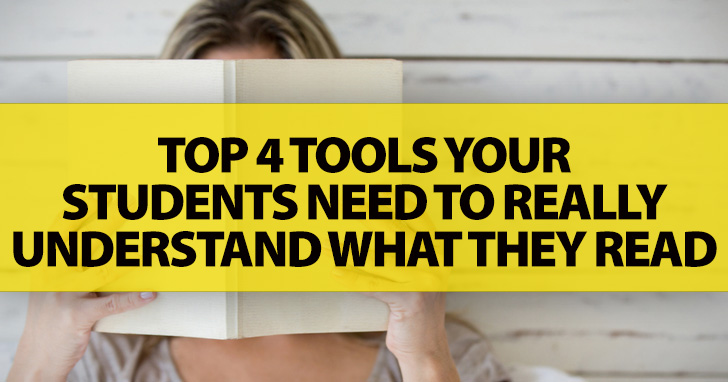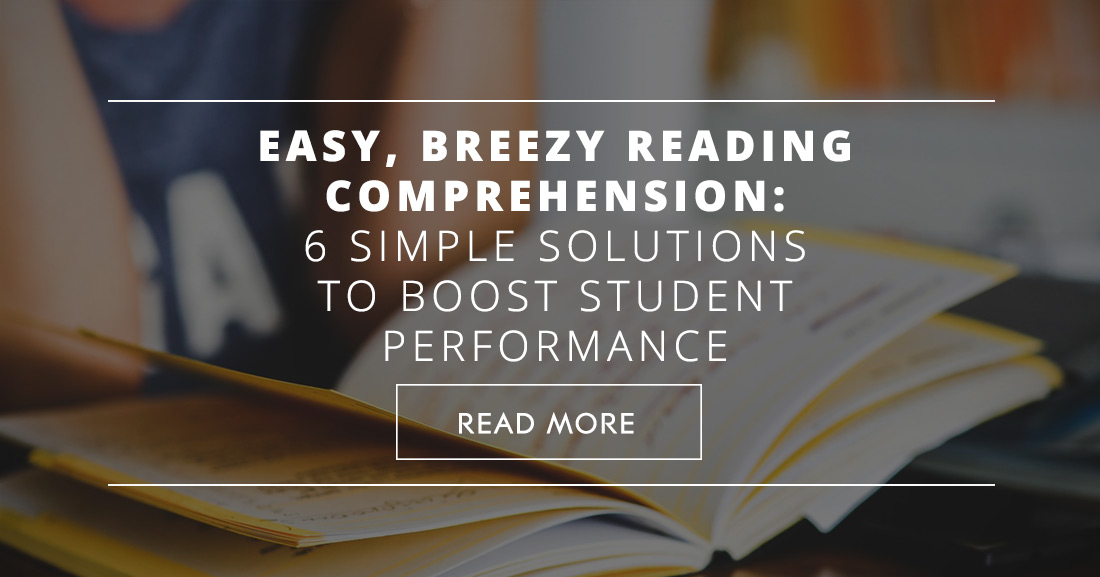Top 4 Tools Your Students Need to Really Understand What They Read


It is arguably the most important aspect of language learning. If you don’t understand what you hear and read, how can you act upon that information? But thankfully increasing student comprehension doesn’t have to be complicated. In fact, there are several tools to increase reading comprehension that require nothing more than a pencil, a notebook, and perhaps some sticky notes. So if you are looking for some easy ways to boost how much your students understand when they read, try one or more of the following strategies.
Yes, you read that right. Write in the book. Something as simple as making some symbols in the margin as your students read can help increase their comprehension. Suggest that they use symbols such as lol for something funny, a checkmark for something interesting, a question mark for something they don’t understand, and an exclamation point for something they think is important. Simple markup like this will make students pay more attention to what they are reading and help them zero in on details they might otherwise pass over. And don’t balk at writing in the book if students are using school owned text. They can make the same marks on flag sized sticky notes, which are about two inches by a half inch, and place them on the margin rather than writing directly on the page.
It might surprise you how much putting information on a certain place of the page can help students understand what they read. In teaching terms, they’re called graphic organizers. They are a way to visually organize information in a way that helps show the relationships between that information. They don’t have to be complicated. Odds are you’ve used a Venn diagram at some point in your life. It’s one of the easiest graphic organizers there is, and all it really is is two overlapping circles. Flow charts are great for showing cause and effect relationships between ideas. A simple google search on reading comprehension graphic organizers will yield dozens of printouts you can use in the classroom with any reading selection.
Reading notebooks are great for ESL students. There are so many different things you can put in a reading notebook, so the flexibility will allow you to meet every student in a way that appeals to them. You can have students answer questions in their reading notebooks, draw pictures, or do other activities. One fun way to think about what they have read is by creating a SLAM page. The page starts with Stating a question – something you want students to understand from what they read. Second they Locate the information in the text that relates to the question. They might make note of where the information was or copy the answer to the question directly into their notebooks. Third, students Add any meaningful experiences they have had that relate to the information they located. Finally, they Make a meaningful conclusion based on the information in the text as well as their personal experiences, answering the question that started the exercise. This type of activity encourages higher level thinking skills from your students as they make comparisons, synthesize information, and offer value judgments based on what they read.
Since your students have started a reading notebook, you can use it to create a lift the flap comprehension activity. In this fun question and answer activity, students write comprehension questions on sticky notes and then arrange those notes on a page of their notebook. Then they fold each note up leaving it stuck to the page and write the answer to the question underneath it. When they press the flap back down, their answer should be covered by the sticky note. You can use any questions you like, but some simple ones that work well are the following. These pages also make great study sheets since students can try and recall the answers to the questions before lifting the flap to check if they are right.
If your students are reading a fictional piece, it might help their comprehension to think about things from the viewpoint of a specific character. Have them take a blank page in their notebook and draw a portrait of one of the characters from the shoulders up. Encourage the students to use details about the character’s appearance from the reading selection. Then, on the back of that page, have students draw a simple silhouette of that same character. Within the silhouette, have students write some of the things that the character thinks or believes or feels. Both sides of the page will encourage students to dig deeper into what they read about the character in the text.
Everything is more fun when dice are involved. (Or is that just in Las Vegas?) Harness your students’ drive to roll by playing comprehension dice. Each group of three to four students will need one die for this speaking activity. Each person rolls the die and then must answer a question based on what they rolled. Write the following on your board and have students copy it in their reading notebooks.
Then have each person roll and then answer their question. If you like, have students write their answers down after they have discussed them in their group.
Taking time to slow down, write things out, and see the relationship between ideas in what read is what really makes the difference. And all you need to accomplish that is some paper and a pencil. So get your sharpeners out and get your students ready to read.